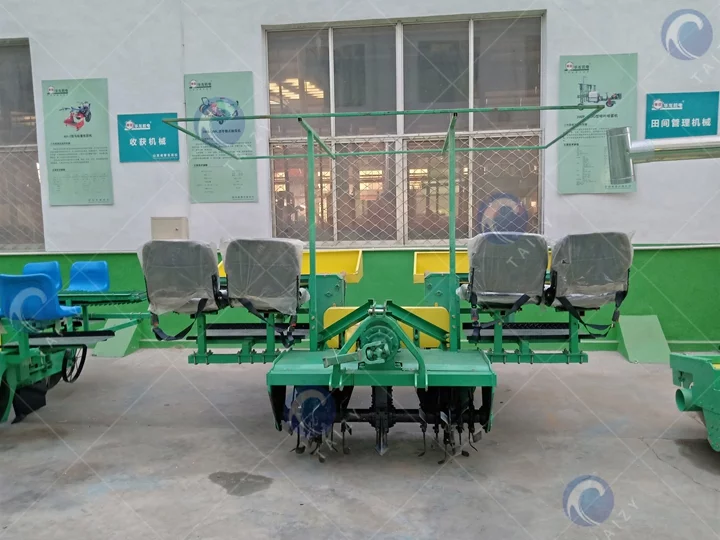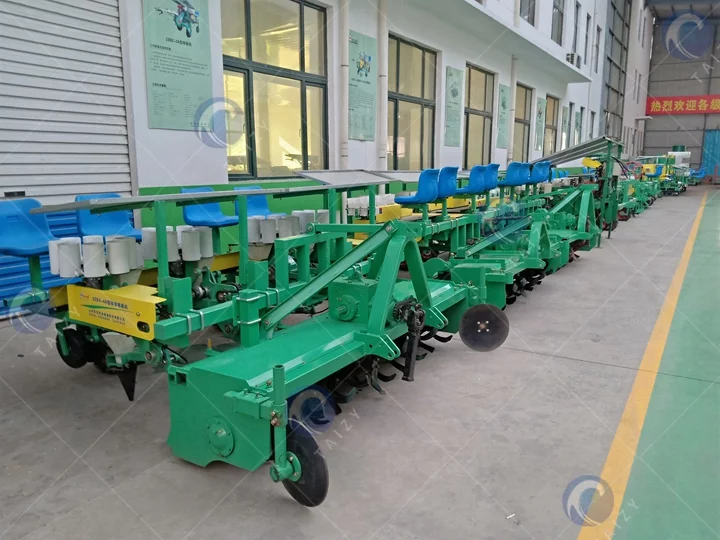Working Process of Plant Transplanter Machine
The self-propelled plant transplanter machine represents a pinnacle of innovation in agriculture, streamlining the intricate process of seedling transplantation to boost overall work efficiency.
Let’s delve into its working principle, dissecting the key components that make this machine a transformative force in modern farming.
1. Key Components of the Self-Propelled Transplanter:
The core components of the self-propelled plant transplanter machine include a seedling cup, seat, tray, frame, transplant device, and wheels. Its structure is intentionally designed to be simple, emphasizing efficiency and ease of operation.

2. Gasoline Engine Propulsion:
At the heart of the self-propelled plant transplanter machine lies a gasoline engine, serving as the robust driving force propelling the machine forward. This engine acts as the powerhouse, converting fuel into kinetic energy, enabling seamless movement across the field.
3. Operator-Centric Design:
The design revolves around the operator’s comfort and efficiency. Positioned on the seat, the operator takes control of the machine’s movement. The ergonomically designed structure ensures a comfortable working environment, allowing the operator to focus on precisely placing seedlings into the cups.
4. Seedling Tray and Cup Integration:
Seedlings are placed in trays strategically positioned on the machine. The operator, seated in the designated position, takes seedlings from these trays and carefully places them into seedling cups. This step is crucial for the subsequent transplanting process.

5. Transplanting Mechanism:
The transplanting mechanism is the heart of the operation. Once seedlings are in the cups, the transplant device takes over. It moves the seed cups into the soil with precision, ensuring each seedling is planted at the optimal depth and spacing. This mechanized process significantly accelerates the transplantation workflow, minimizing manual labor.
6. Seamless Integration of Wheels:
Wheels play a crucial role in the mobility of the self-propelled plant transplanter machine. As the gasoline engine propels the machine forward, well-designed wheels ensure smooth navigation across the field. This seamless integration allows for efficient and precise movement, contributing to the overall effectiveness of the transplanting process.
Conclusion
In conclusion, the self-propelled transplanter’s working principle revolves around simplicity, efficiency, and operator-centric design. By harnessing the power of technology, this agricultural marvel exemplifies the evolution of seedling transplantation, paving the way for increased productivity and sustainable farming practices.